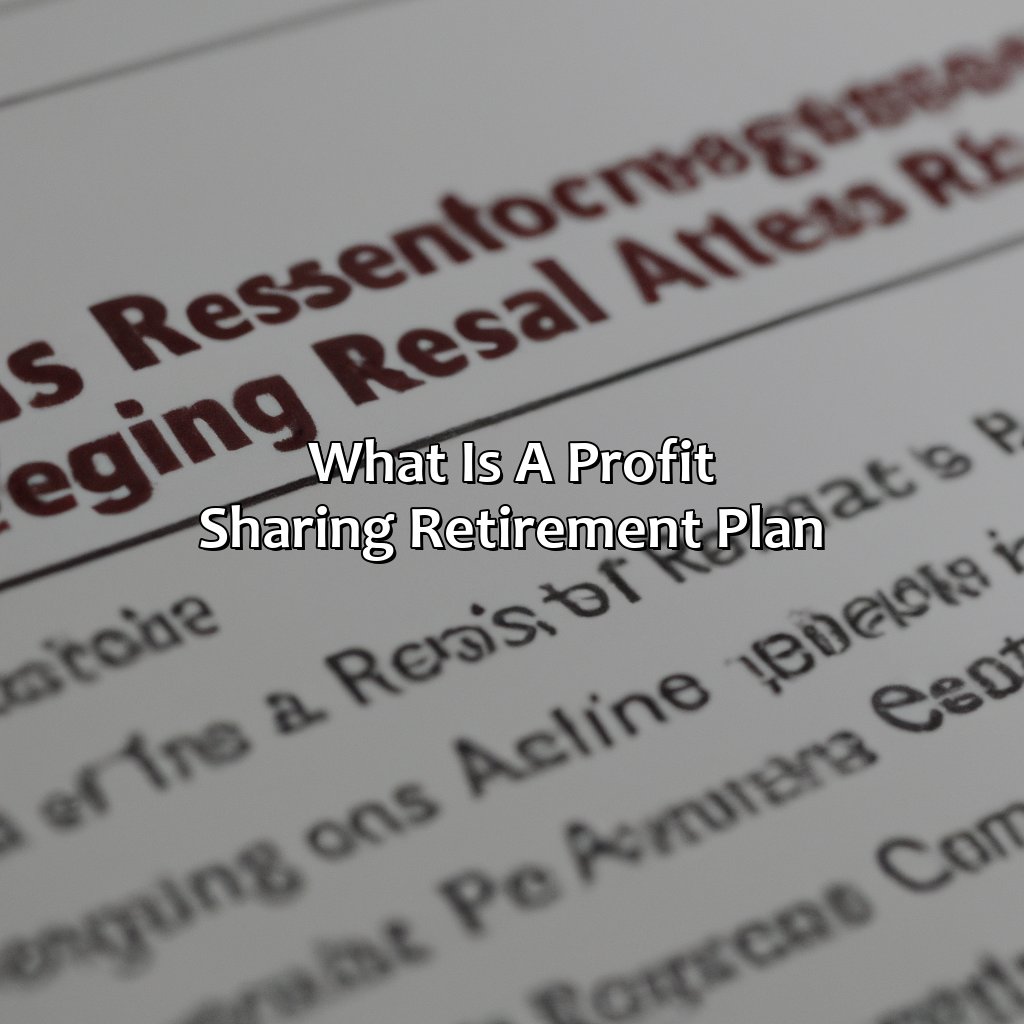What Is A Profit Sharing Retirement Plan?
Key Takeaway:
- A Profit Sharing Retirement Plan is a retirement plan that provides contributions to employees’ retirement accounts based on the company’s profits. The contributions are made at the employer’s discretion.
- Eligibility for a Profit Sharing Retirement Plan usually requires a certain period of employment and minimum age. However, these qualifications vary between companies.
- A Profit Sharing Retirement Plan offers tax benefits to both employers and employees. Employers can deduct contributions as a business expense, and employees do not pay taxes on contributions until they withdraw them during retirement.
You may have heard of profit sharing retirement plans and want to know more. Understanding the advantages and disadvantages of these plans is crucial for making the right decision for your future. In this article, you will discover what a profit sharing retirement plan is and how it can benefit you.
What is a Profit Sharing Retirement Plan?
Gaining insight into a profit sharing retirement plan? Let us explore its definition and who is eligible. This will make it easier to grasp how it works and who can get the most out of it.
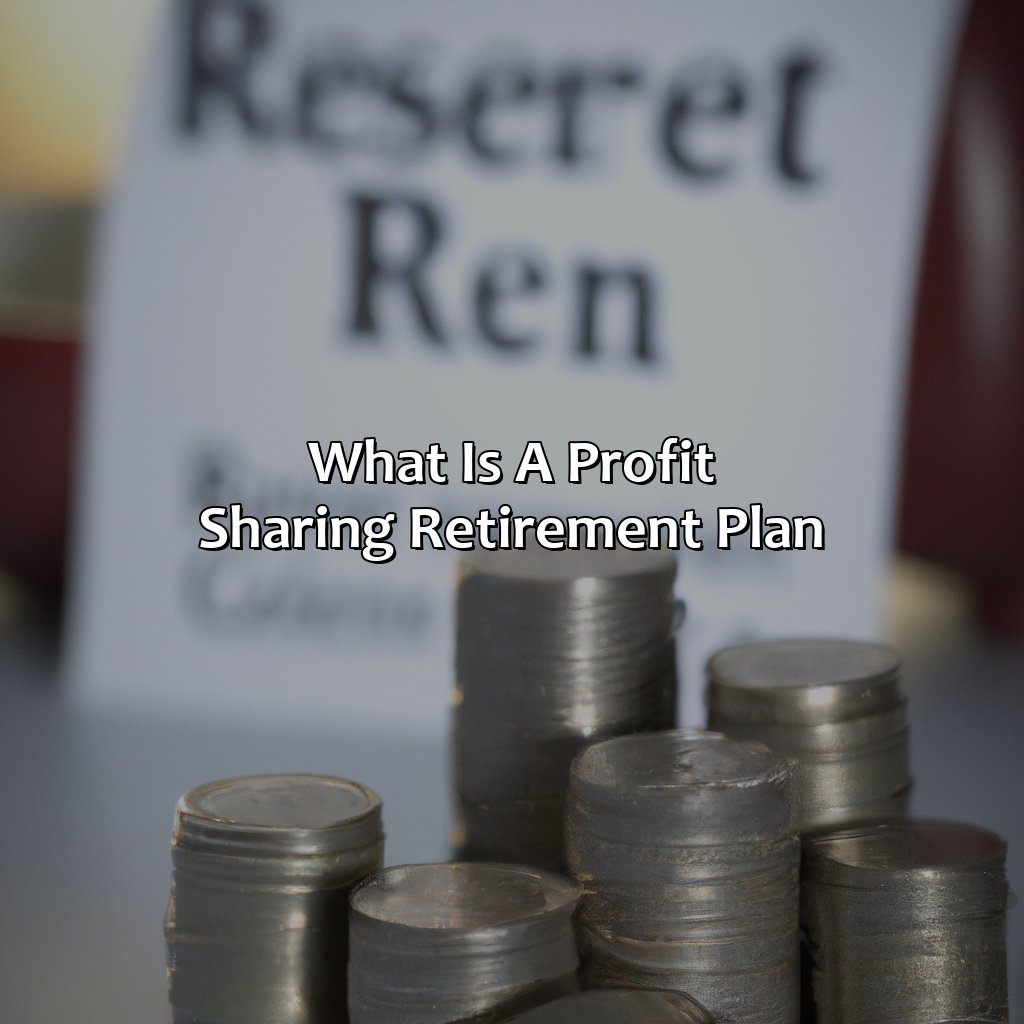
Image credits: retiregenz.com by Adam Woodhock
Definition of Profit Sharing Retirement Plan
A profit sharing retirement plan is a type of retirement account in which employers contribute a portion of their profits to the retirement savings of their employees. This contribution is made on top of any normal salary, bonus or other perks that employees might receive.
In this type of plan, the amount contributed to employee accounts varies depending on the success and profitability of the company. Employers can adjust the percentage or amount they contribute each year based on how well the business is doing.
One significant advantage of profit sharing retirement plans is that they provide employees with an additional way to save for retirement, which can be especially beneficial if they cannot afford to contribute much themselves. It also incentivizes workers to work harder since they know their financial future is linked directly with the success of their employer’s business.
An interesting historical fact about profit sharing plans is that they first became popular in the 1970s as a way for companies to reduce labor costs while still providing attractive benefits.
Who needs job security when you can just hope for a profitable retirement plan?
Eligibility for Profit Sharing Retirement Plan
Employees meeting certain criteria can become eligible for a profit sharing retirement plan. Such plans allow employers to share their profits with the employees in the form of contributions to their retirement accounts. Eligibility typically involves working for a specific amount of time or number of hours, and sometimes may require meeting profit targets or company performance metrics.
To qualify for a profit sharing retirement plan, an employee may need to have been employed by the company for a certain period of time, such as one year or more. Additionally, some plans may require employees to work a minimum number of hours per week, usually 20 hours or more. Other eligibility factors may include achieving specified levels of job performance or working in certain positions within the company.
The eligibility requirements for profit sharing retirement plans are often designed to ensure that participating employees are dedicated and long-term contributors to the company’s success. These requirements help establish a sense of loyalty among employees towards their employer, and encourage high levels of productivity.
A notable example where profit sharing retirement plans were used successfully is at Southwest Airlines. During the early days of its operations, all airline staff became part owners through stock options and profit-sharing plans. By leveraging these plans effectively in conjunction with frequent bonuses tied directly to performance goals, Southwest was able to create one of the most successful airline models ever seen in history – even beating out giants like United and Delta which had much larger resources at their disposal!
You might retire with a full bank account, but without a profit sharing plan, you’ll be missing out on a retirement party with your co-workers.
Advantages of Profit Sharing Retirement Plan
Gain knowledge on Profit Sharing Retirement Plan and its Tax Benefits. Plus, recognize how it motivates employees. These two topics will provide you with an insight into the tax advantages that come with the plan. This creates a win-win situation for both employer and employee.

Image credits: retiregenz.com by Yuval Arnold
Tax Benefits of Profit Sharing Retirement Plan
Profit sharing retirement plan offers various tax-related benefits that can be advantageous to both employers and employees. The tax benefits of this plan include deductible contributions, deferred taxes on earnings, tax-free growth in the account and reduced employer payroll taxes.
- Employees have the opportunity to defer paying taxes on their portion until withdrawal
- Even if you make large profit-sharing contributions for yourself, you may still contribute the maximum amount allowed by law to your traditional IRA or Roth IRA
- Employers can take advantage of tax credits for setting up a retirement plan compared to non-participation penalties
- Profit-sharing plans may allow businesses to offer higher contribution limits than 401(k)s, giving the chance for increased savings potential while receiving better tax savings.
Additionally, profit sharing plans reduce taxable payroll, which means additional savings for both business owners and their employees over time. As these plans also shape employee loyalty and retention, they are an excellent tool for expanding a company’s workforce.
In January 2016, New York-based accounting firm Marcum LLP announced “The perfect time has arrived” as businesses consider establishing or increasing contributions to retirement programs now due to recent changes in regulations governing qualified plans sponsored by businesses.
Want to motivate your employees? Show them the profit sharing retirement plan and watch them work harder than a squirrel trying to hoard nuts for winter.
Motivation for Employees
Employees can attain motivation through a Profit Sharing Retirement Plan. With increased financial rewards, employees are likely to be more loyal and hardworking as they understand their work directly affects their earnings. A profit sharing retirement plan involves employers making contributions based on the company’s profits, which gives employees a direct incentive.
In addition to monetary benefits, this plan also creates an opportunity for employees to become more engaged with the company’s success and future prospects. When companies offer this benefit, it indicates that they value their employees’ efforts and future at the workplace. This boosts employee morale and motivation to improve individual performance and the organization’s productivity.
The profit-sharing retirement plan offers multiple unique advantages over other types of plans, such as 401(k)s. Since there are no predetermined employer investment obligations under this plan, it allows flexibility in contribution levels based on the company’s finances or yearly performance. The employer might also use different contribution formulas depending on factors such as age or length of service with the company.
To maximize employee engagement from a profit-sharing retirement plan, it is essential to provide education sessions explaining how it works. Employees should be aware of ways they can control their funds, how profits affect their compensation amounts every year and tax implications that would arise when withdrawing money from their accounts.
Moreover, for the employees to realize significant financial outcomes after retirement while minimizing risks involved in investing, educate them about potential investment options available within the profit-sharing retirement plan. By doing so makes them comfortable controlling their portfolio investments through tools like online portals or working with financial advisors recommended by their employers.
Saving for retirement is like investing in a new pair of shoes – the more contributions you make to your profit sharing plan, the better the fit when you retire.
Profit Sharing Retirement Plan Contributions
Comprehending the profit-sharing retirement plan is key! Contributions are money put in to provide retirement benefits. Maximize the plan’s benefits: understand the advantages of employer and employee contributions. It’s essential!
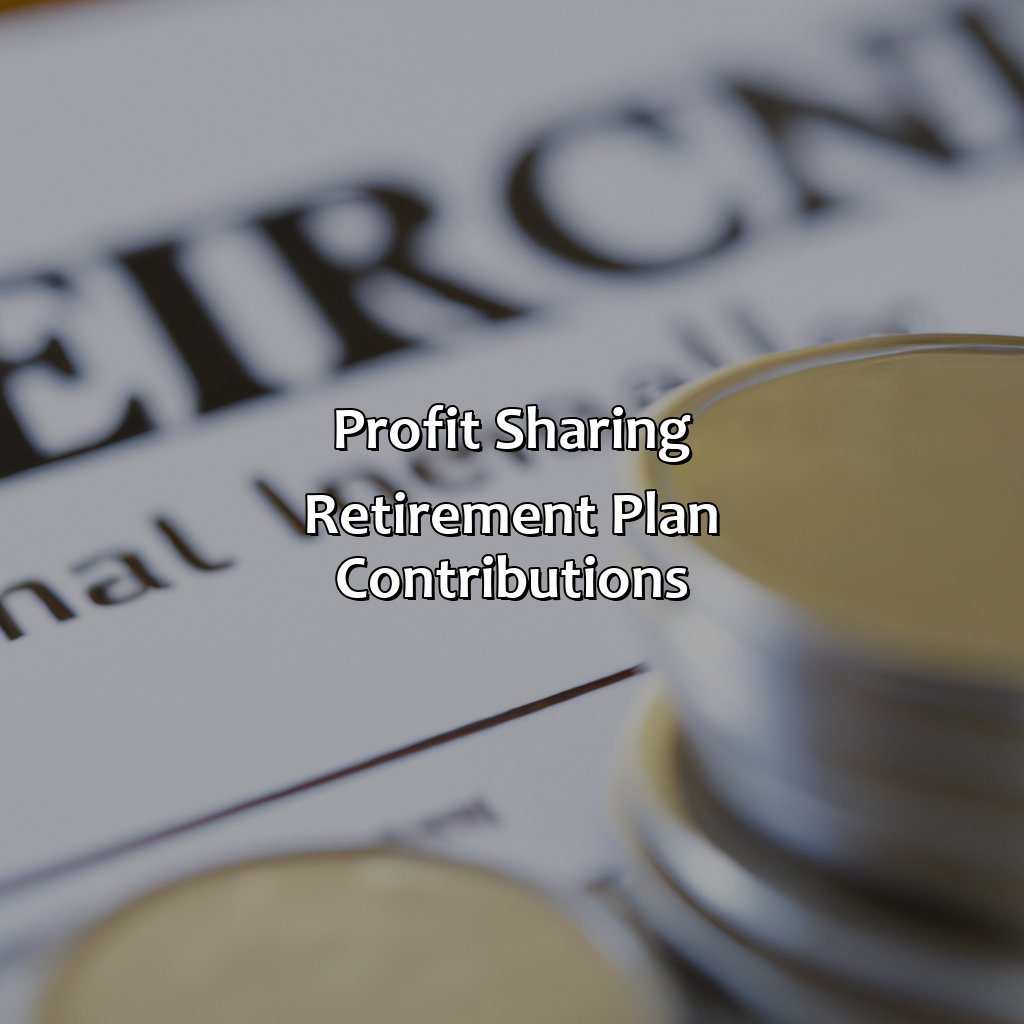
Image credits: retiregenz.com by Adam Arnold
Employer Contributions
Employer contributions refer to the funds that an organization contributes towards an employee’s retirement benefit plan. These contributions are a form of compensation given by the employer to its employees in addition to their regular salary.
- Employers can make contributions based on a percentage of an employee’s salary or as a fixed amount.
- Contributions made by the employer are tax-deductible for the company, and the employee enjoys tax-deferred growth on those funds until they start taking distributions.
- Profit-sharing plans allow employers to contribute a portion of the company’s profits into each employee’s retirement account. Contributions may be discretionary or predetermined based on a formula.
- The amount contributed is usually vested over time, meaning that it becomes fully owned by the employee after working for the company for a certain number of years.
In some cases, employers may offer matching contributions where they match a certain percentage of what an employee contributes towards their retirement account. This serves as added incentive for employees to save for retirement.
It is worth noting that while these contributions can greatly benefit employees, they do not guarantee financial security during one’s retirement years.
According to a report by Vanguard, 71% of companies with profit-sharing plans also offer 401(k) matching programs.
Time to start a savings account, also known as the ‘I can’t retire unless I want to live under a bridge‘ fund.”
Employee Contributions
Employer Contributions towards profit sharing retirement plans can boost employee savings. These contributions are entirely optional and depend on the company’s profitability. More importantly, it is a way for employers to reward employees for good performance.
Employees are free to make their contributions towards profit-sharing retirement plans. These contributions come from pre-tax income, which reduces their taxable income and hence reduces tax liability. It also ensures that employees have a stake in their retirement savings.
Additionally, employees can maximize their employer’s contributions by maximizing their own contributions towards the plan. It is also pertinent that employers offer this plan as part of the employee benefits package to retain top talent.
To ensure maximum utilization of these plans, employers should educate employees on how it works and its benefits. Employers should include this plan in employee compensation discussions and provide regular updates on changes and benefits updates of the program.
When it comes to distributions from a profit sharing retirement plan, the only thing guaranteed is the uncertainty of taxes and penalties.
Distributions from Profit Sharing Retirement Plan
Need help with distributions from your profit sharing retirement plan? This section’s here to help. It’ll reveal the age requirement and types of distributions. Plus, it’ll provide solutions for making the best decisions for your plan. All this info in one place!
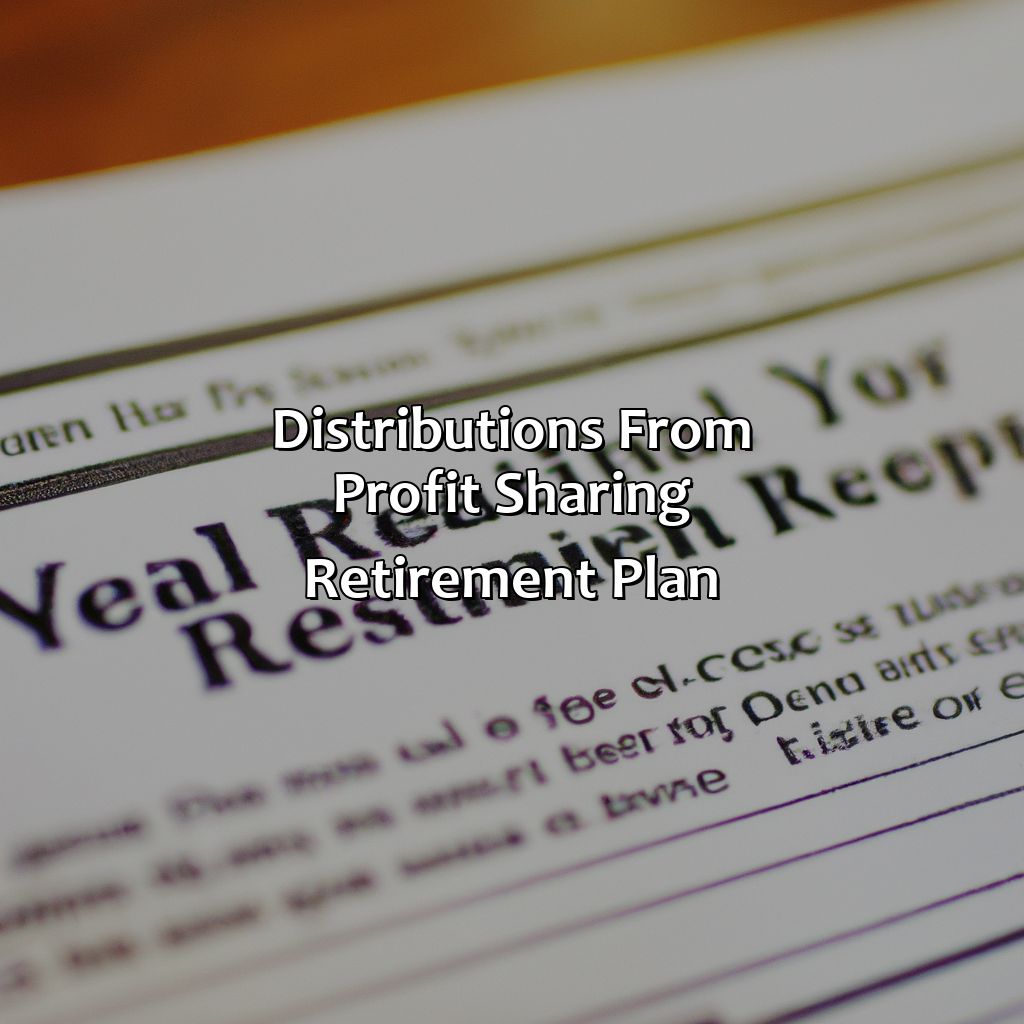
Image credits: retiregenz.com by David Washington
Age Requirement for Distributions
When can Distributions be made from a Profit Sharing Retirement Plan? Generally, distributions can only be made at the age of 59½, although it can differ based on the specific plan’s terms and conditions.
Once you reach the age of 59½, you are eligible to receive distributions from a Profit Sharing Retirement Plan. It is essential to understand that if money is withdrawn before this age, it may lead to a penalty. Distributions after the age limit must begin by April 1st following the year in which an individual turns 72.
Moreover, beneficiaries may also receive distributions under certain circumstances after the plan owner’s death. However, receiving early withdrawals or failing to take required minimum distributions on time will result in additional taxes and penalties.
To make sure you comply with all defined rules and regulations for distributions from a Profit Sharing Retirement Plan it is advisable to consult with a qualified financial advisor specializing in retirement planning. Such advisors can suggest options like rolling over your assets into another account or delaying distributions until later years.
Time to distribute some retirement funds – like Oprah, but instead of cars, it’s just different types of money.
Types of Distributions
Different Ways of Receiving Payments from Profit Sharing Retirement Plans
Professionally, profit sharing retirement plans pay participants in a variety of ways, depending on the plan structure, the employee’s employment status and the payout options chosen. Here’s a breakdown of the different types of distributions you can receive:
| Type of Distribution | Description |
|---|---|
| Lump Sum Payment | A single distribution made in one payment. |
| Periodic Payments over Time | Distributions paid out as fixed amounts over a set period or until funds are exhausted. |
| Installment Payouts | Payments made over a series of years, rather than all at once. |
It is important to keep in mind that certain types of distributions may have tax implications.
Participants should also be aware that if they take a lump sum distribution, they may miss out on future potential gains if they’ve invested aggressively within the plan.
Profit sharing retirement plans have been around since the late 1950s when changes in pension laws allowed for businesses to more easily offer them as an alternative to traditional pension plans. Since then, these plans have become popular with employers looking to offer their employees a way to save for retirement while sharing the gains made by the business.
Choose the wrong profit sharing retirement plan and you could end up retiring with profit-less sharing.
Important Factors to Consider While Choosing a Profit Sharing Retirement Plan
When deciding on the ideal profit sharing retirement plan, mull over crucial elements like admin fees and legal/regulatory needs. These points will largely influence the success of your plan.
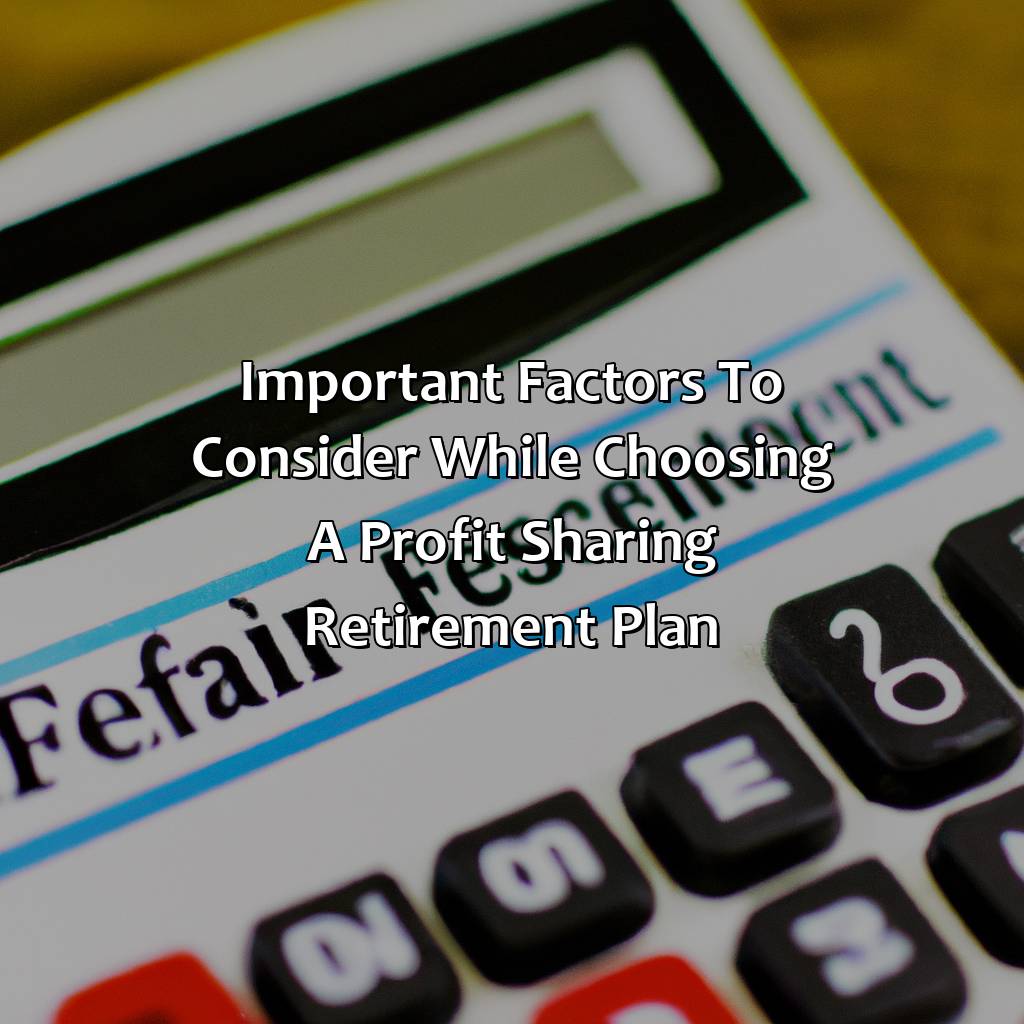
Image credits: retiregenz.com by David Arnold
Plan Administration Fees
When selecting a profit sharing retirement plan, considering the costs associated with administration is crucial. These expenses can play a significant role in determining how much of the profits are distributed among employees.
In Table 1 below, you’ll find a breakdown of common administrative fees for profit sharing plans. Note that some fees may vary depending on the fund manager and investment options.
| Administrative Fee | Description |
|---|---|
| Record keeping fee | Cost of maintaining participant accounts and records |
| Investment fee | Management and expense ratio of investment portfolio |
| Compliance testing | Ensuring plan meets IRS regulations |
| Audit fee | Perform annual external audit by independent auditor |
It’s important to keep in mind that these fees can eat into the overall earnings, reducing the amount that participants will receive. Therefore, it’s essential to find the right balance between paying fair pricing while receiving excellent service.
One suggestion is to reach out to several potential fund managers and compare their administration fee schedules before signing up for any plan. Additionally, splitting up administrative duties between multiple companies can significantly lower overall costs while providing another layer of security.
Who says reading about legal requirements for retirement plans has to be a snooze fest? Let me spice things up with some dark comedy.
Legal and Regulatory Requirements
To ensure compliance with legal and regulatory obligations, choosing a profit sharing retirement plan requires an in-depth understanding of tax laws and regulations. Employers need to be aware of contribution limits, vesting schedules, eligibility requirements, and fiduciary responsibility. Noncompliance can result in hefty fines and penalties.
Proper documentation is necessary for legal compliance. Employers are required to provide all participants with a detailed summary plan description (SPD) that outlines the plan’s features and benefits. They must also ensure that the plan is updated regularly to reflect any changes in tax laws and regulations.
Furthermore, employers need to establish a fiduciary committee to manage the plan’s investments responsibly. The committee must act solely in the best interests of the participants and make informed decisions regarding investment options.
It is essential to note that ERISA governs profit-sharing plans’ management, protecting retirement assets by imposing strict conduct standards on fiduciaries. Therefore, it is crucial to appoint competent professionals who are knowledgeable about ERISA guidelines when establishing a profit-sharing retirement plan.
According to Forbes, “Profit-sharing plans can help businesses remain competitive in attracting and retaining top talent.” It highlights how profit-sharing plans empower employees while enhancing companies’ growth potentials.
Five Facts About Profit Sharing Retirement Plans:
- ✅ Profit sharing retirement plans provide employees with a share of the company’s profits, typically in the form of contributions to a retirement account. (Source: Investopedia)
- ✅ These plans are a popular form of employee benefits, with roughly 50% of US employers offering some type of profit sharing plan. (Source: Bureau of Labor Statistics)
- ✅ Contributions to profit sharing plans are generally discretionary, meaning that employers are not required to make contributions every year. (Source: IRS)
- ✅ Profit sharing plans can be structured in different ways, such as percentage-based or flat dollar contributions, and must comply with certain IRS rules. (Source: The Balance)
- ✅ Profit sharing plans can help incentivize employees to work towards the success of the company, while also providing them with a valuable retirement benefit. (Source: Forbes)
FAQs about What Is A Profit Sharing Retirement Plan?
What is a profit sharing retirement plan?
A profit sharing retirement plan is a type of retirement plan that allows employers to contribute a portion of their profits to the retirement accounts of their employees.
How does a profit sharing retirement plan work?
In a profit sharing retirement plan, the employer makes contributions to the plan based on the profits of the business. The contributions are then allocated to the participants’ accounts based on a predetermined formula.
Can employees also contribute to a profit sharing retirement plan?
Yes, employees can also make contributions to a profit sharing retirement plan, either through salary deferrals or after-tax contributions.
What are the tax benefits of a profit sharing retirement plan?
Contributions made to a profit sharing retirement plan are tax-deductible for the employer and are not taxable income for the employee until distribution.
How are distributions from a profit sharing retirement plan taxed?
Distributions from a profit sharing retirement plan are taxed as ordinary income. However, if the distribution is made after the participant reaches age 59½, it may be exempt from the 10% early withdrawal penalty.
Can a profit sharing retirement plan be used in conjunction with other types of retirement plans?
Yes, a profit sharing retirement plan can be used in conjunction with other types of retirement plans, such as a 401(k) plan. This can allow for even greater contributions and tax benefits for both the employer and employees.
